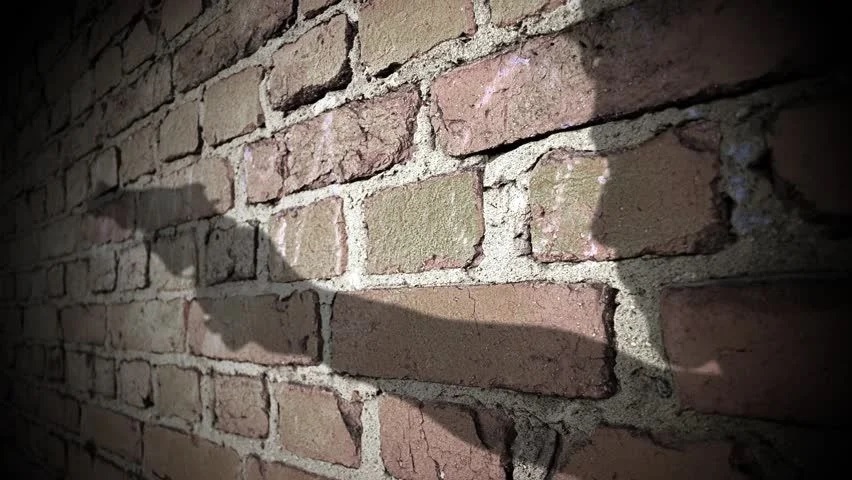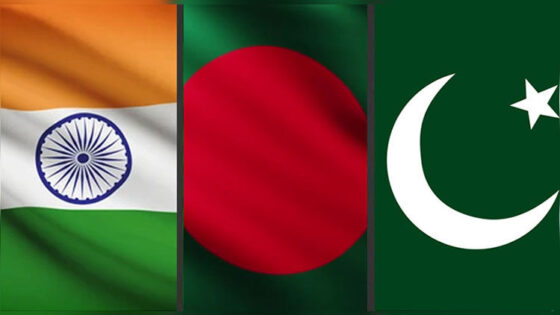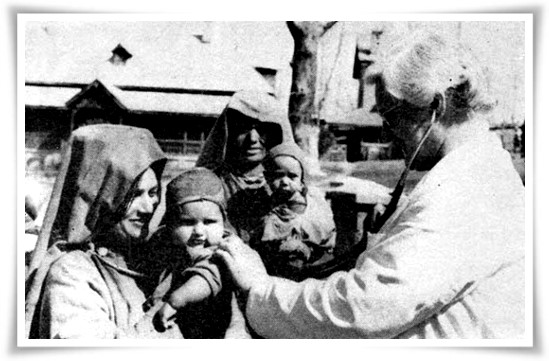If I/we don’t speak for others, there will be no one left to speak for me/us when they will finally come for me/us!
By Javaid Trali
In a place like Kashmir, the hope of justice in cases of killings by “unknown gunmen” comes in small morsels. The faceless killers have for long been having a field day, and no one – neither society nor the system– seems to be bothered to unravel their motivations and machinations.
If the victims happen to be high-profile targets, there are, initially, some noises of condemnation, then silence again as always. This pattern of reaction was seen when senior journalist Shujaat Bukhari was done to death along with his personal security officers (PSO) outside his office in Srinagar’s Press Enclave three years back (on June 14, 2018) in an attack carried out by three assassins
It happened when Mirwaiz Maulana Mohammad Farooq was assassinated on May 21, 1990. Even as it is known that he was killed by Hizbul Mujahideen militants, whose identities too are known by now, and recorded in the history books, his son, Omar Farooq, who, like his father, assumed the role of Kashmir’s Mirwaiz, has even to this day chosen not to speak publicly about his father’s killers and their motivations.
Sajad Gani Lone did call out militants and their mentors and handlers in Pakistan when his father Abdul Gani Lone was assassinated on May 21, 2002, during a rally held at Srinagar’s Eidgah to commemorate senior Mirwaiz’s death (read assassination). But within no time he too retreated into silence — in the “larger interests” of… nobody knows whose!
In the blood-soaked killing fields of Kashmir, thousands of people have been assassinated. There have also been people like Jaleel Andrabi (who was allegedly subjected to extrajudicial execution by the Indian Army in March 1996), Javed Ahmad Shah, Nazir Ahmad Gilkar and Ghulam Rasool Matto (victims of Soura triple murder case involving the then Sub-Divisional Police Officer Abdur Rashid Khan alias Rashid Billa and some of his men in Soura Police Station in June, 1999), Zahoor Ahmad Dalal and Juma Khan (two of the five persons killed in Pathribal fake encounter in March 2000), and countless other similarly placed victims.
Some of the victims have been high-profile, and certain others not really so high-value targets, and still many more perhaps carried no value at all — if the investigations that follow such assassinations are taken as an indicator.
In certain cases, like the ones cited above, which were investigated, the killers were identified. But in most of the cases perhaps nobody really bothered to examine who killed whom and why. Or if at all investigations were carried out for the sake of normal policing procedures, the process has been painfully tardy. And still worse, the findings were not made public so that the general population would have known the reasons and motivations of the killers.
Even in the case of the high-value targets, which were duly scrutinized, the process was never really taken to what could and should have been the logical end. For instance, in Bukhari’s killing, police may have painstakingly investigated what was in its parlance a ‘blind murder case’ – the assassins were identified and subsequently killed in one or the other anti-militancy operations. But is that all there was to it?
What about the ecosystems, the networks that had plotted and encouraged Bukhari’s killing, and prompted and prodded similar other killings? What about those remotely placed media mercenaries, who while sitting in the safe and secure spaces outside Kashmir and India, use their smartphones and computers to identify their targets? What about the systems and the cultures which promise and ensure immunity and protections not only to the killers who fire the guns, but still higher rewards, financial and otherwise, to those who are tasked with pulling the strings of the actual killers? What has been done to neutralize the threat at its source, the point of its origin?
Police may no doubt take pride in having killed the likes of Naved Jutt or Azad Malik (the militants it said were involved in Bukhari’s killing), but has it been able to neutralize the actual threats stoked by, and emerging from the personal blogs and Facebook and Twitter pages and other social media posts that name and blame people to create conditions that then lead to their killing? Has anything been done to blunt the impact of the poison which is spewed through the electromagnetic waves to choose and identify the targets, and endorse and condone such terminal violence against them in the lanes and bylanes, roads and streets, hill and dale of Kashmir?
These fatal ecosystems have, both by design and default, accorded a cover of confusion to such killing, so that common people do not really get to know the identity and aims of killers, nor the faults and shortcomings of the killed. Actually, this confusion suits all, because it always comes in with, and ensures a sufficient degree of unaccountability which is needed by the multitude of actors involved in situations as have been here in Kashmir for over three decades now.
Actually, in such dirty war situations, nobody wants to be held accountable for anything; so the confusion has been accorded the sanctity of continuity. This is why those who actually have the requisite knowledge to clear the airs of uncertainty, and the wherewithal to unmask the ugly truths too have deliberately chosen to patronize and promote further confusion because it suits them and their politics. But the problem is that this culture also suits the adversary. The unscrupulous, and even the ordinary petty criminals too long for, and thrive and prosper in such a biosphere.
This is precisely why nobody is really sure who is (and has been) killing whom, and why, in Kashmir. Nor is anybody in a position to anticipate or predict who will fall next victim to whom, when, where and again, why. So this dance of death is very unlikely to end anytime soon, because people have, collectively, failed to send a clear message to the faceless killers about their outrage, if at all they really felt so!
Read: Some known facts about the “unknown gunmen” in Kashmir
At a place where even toddlers are not spared as the killers of a three-year-old get away with their barbarity just because their tyranny comes wrapped in an aura of certain politics, nobody really could claim to feel outraged (remember in September 2015 a man was killed in Sagipora Sopore, along with his three-year-old son by the “unidentified gunmen”).
Unfortunate though, but the fact is people here have not been incensed by the worst pornography of violence Kashmir has seen in its bloody history of the past 30 years. Had there really been anything called public outrage, then obviously people here would have long ceased to be a faceless, disoriented mass. They would instead have put a bold face to confront and condemn the cruelty as it deserved to be condemned and confronted, without compartmentalizing tragedies on the basis of political and other lineages of the victims.
But people of this land have failed themselves. Like them, their condemnations too have been, and still are, selective and politically calculated. And as long as it continues to be like this, not much is actually going to change here.
Recall that famous provocative poem written by Pastor Martin Niemöller (1892–1984) about the cowardice of German intellectuals following the Nazis’ rise to power and the subsequent purging of their chosen targets, group after group.
Read: Incidents like Shopian, Sopore negate benefits of most notable govt initiatives
“First they came for the Socialists, and I did not speak out— Because I was not a Socialist. Then they came for the Trade Unionists, and I did not speak out— Because I was not a Trade Unionist. Then they came for the Jews, and I did not speak out— Because I was not a Jew. Then they came for me—and there was no one left to speak for me.”
Kashmir has, over the years, steadily morphed into a place where people of different hues, political leaders included, simply avoid looking in the face of ugly realities, leave aside coming out to openly criticize anything. It’s been three years since Shujaat Bukhari was assassinated, but even today the trend of naming and blaming some, or the other person, singling out someone by placing them in the so-called “hit-list” continues.
What’s still worse is that the common people, and particularly those who are very vocal on social and mainstream media, do not really resent this fatal tirade against their fellow people. Instead, those who are spared today somehow seem to rejoice by thinking “thank God it’s not me” and then concoct reasons to justify and condone the inclusion of someone else for being hit.
We have not learnt our lessons. If I/we don’t speak for others, there will be no one left to speak for me/us when they will finally come for me/us! This is the reality put forth by Niemöller some hundred years back.
Read: Kashmir’s Killing Machine: Whom to Blame
It’s time that the faceless killers – whosoever they are – are unmasked and their interests and motivations deconstructed so as to make sense of the popular confusion which has for long enjoyed the privilege of status quo. The way ordinary people, the non-combatants, here are done to death only because some people feel they are against their political views, is absolute madness, and one really wonders if such a behavior could/should be allowed the sanctity of continuance.
Those who do so by giving out confusing signals through their politically loaded statements also merit similar naming and blaming as should be given to those who have become habitual of thrusting their political views and beliefs on others through the barrel of the gun.
It’s time to decide: is the kind of behaviour we saw in Bukhari’s, Lone’s or for that matter Jalil Andrabi and countless other such killings, at the hands of state and non-state actors – irrespective of the reason and motivations of the killers – acceptable in this society? Aren’t people entitled to personal choices, political views and opinions? Who has given one set of people the right to use violence against another set of people?
Those involved in the incidents like this must be taken to task. But here again, the unfortunate question is who will do it. Society will also have to figure out how to deal with such elements, who are having a field day in the ‘absolutist anarchy’ that is ruling the roost in Kashmir.
An entire population cannot be left at the mercy of psychotic killers who go on victimizing people at will and yet remain remorseless for they are credited with fighting for a “cause”.
It’s unfortunate that on both sides of the political divide are certain people, who in their over-enthusiasm, are turning off a lot of people (common people) through their insolence, and bring disrepute to the “cause” they claim to espouse.
The views expressed in this publication are those of the author(s).
- For more on topic Conflict Analysis, click here






Leave a Reply
You must belogged in to post a comment.